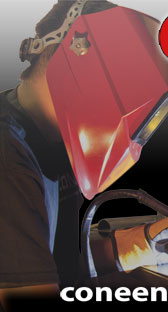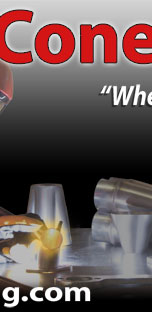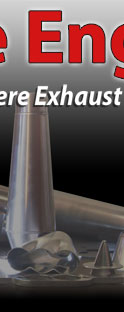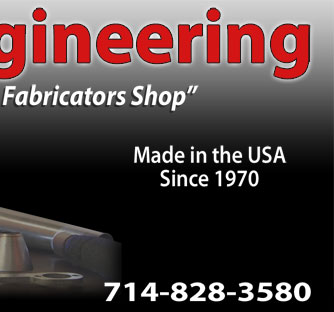|
Why build it yourself? There are many reasons for choosing to design and build your own motorcycle exhaust system:
- No Original Equipment (OE) or Aftermarket options available
Your model could be so old that there are no OE replacements or aftermarket options available. Most aftermarket exhausts are designed and built when bikes are new: close to 70% of aftermarket exhausts are sold within the first 3 model years, after that sales drop way off and replacement is generally done because a part wears out rather than for performance reasons. With older bikes, many of the companies that were around when these bikes were new are not in business any longer, and if they have survived, demand is often so low that they can’t justify production, assuming they still have the designs and can find where they stored the original jigs!
Most of the aftermarket exhausts still available for vintage bikes are those that have a significant “cult” following. This is especially true for companies releasing new products – demand precedes supply. If you have a rare bike, or one that aftermarket manufacturers decided wasn’t popular enough to justify the cost of developing an exhaust, finding a manufactured exhaust could be very difficult.
Lack of supply is also a problem on some newer bikes that are less popular or that aren’t frequently modified.
- Style
When you design and build your own exhaust system you can tailor it to your specific bike and taste so that it doesn’t have to look like a hundred other bikes. Many times it is possible to create a design that would never be built by a manufacturer as it would be too complicated to reproduce other than one at a time.
- Performance
Most vintage aftermarket exhausts were designed for racing or for advertising maximum dyno horsepower numbers. Because of this, they were not always street-friendly, especially on machines that don’t have heavily modified engines. Since many of the vintage exhausts still available date back to these original designs, it is often possible to design and build a more street-friendly exhaust that can give you better real world performance. Another consideration is how loud some vintage exhausts are. With increasing pressure to tone down sound levels, many times you may have to compromise all-out performance to obtain a quieter bike.
- Price
Do-It-Yourself doesn’t always mean Do-It-For-Less. Aftermarket and OE manufacturers absorbed a lot of R&D and tooling expense in the development of their exhausts. They also buy supplies in very high volumes. So compare the cost of building your own exhaust to the cost of having anything custom built.
If off-the-shelf options are still available, the savings in building your own design may be minimal to non-existent. Sometimes you can take a premade exhaust and make some modifications to get better fit and a more custom look, perhaps saving some time and money in the process.
There are some decent headers available that you can make better by cutting a tube here and there, rerouting, replacing an oversize collector with a better size or design, and adding a more appropriate muffler.
But the greatest part of building something yourself is that satisfaction you get from having built it yourself.
- History
In the beginning performance exhausts were tested in the field. Generally the builder was a racer or an engine builder and they tested their design under real-world conditions. Then came the dyno and the competition became who could advertise the most horsepower. Early dynos were pretty unsophisticated, you goosed the throttle wide open and measured the horsepower. So what you began to see was bigger headers and bigger mufflers dumping in more fuel, to get that big horsepower number.
But a disconnection developed between the results on the dyno and what happened in the real world. Quite often the advertised horsepower was only being measured at maximum. If power across the rest of the curve was being sacrificed for these top-end numbers, it was swept under the rug. In many cases some designs also developed quirky powerband characteristics making them difficult to ride and tune. Additionally, a lot of these early exhausts were originally designed for race bikes and made their way onto street bikes as an afterthought.
So now you combine a design originally developed for a heavily modified race bike done early in the dyno days, and you put it on an older, mostly stock bike being run on the street, it stands to reason that you might be in for some unpleasant surprises.
- Usage
Another critical consideration is what your bike is being used for. Performance characteristics of road-racing, dirt track, salt flats, MX, drag racing, or street-use bikes are radically different from one another. Bikes that operate in the upper end of the powerband for prolonged periods of time will necessarily have a different design from those that are shifting constantly, moving up and down through their powerband. For the best results, you want an exhaust designed for your specific purpose.
- Short Cuts
This isn’t really a short cut but it can save a lot of wasted effort and frustration: Do Some Research First! Look around you, get on the internet, see what exhausts have been offered for your bike in the past and what has been said about them. What were the dimensions of these exhausts? What were they primarily used for? What were the modifications on the bikes they were used on? Then compare these answers to your own application before you start buying and building
- Material
Another choice is going to be whether to build your header from mild steel or 304 stainless steel. There are other more exotic grades of material such as titanium, Inconel, 316 or 321 grade stainless steels. These are fantastic materials, and each have advantages but they are also exceptionally expensive and well suited for extreme duty. So for this article we’ll stick with the basics. We’ll also assume that the material being used is 16 gage (.06”) wall thickness. Thinner and thicker wall tubing is available but 16g is the most widely available.
Mild steel is a very forgiving material. It doesn’t get brittle from heat cycling, it tends to flex a little more which also leads to less cracking, it can be welded by many different methods, it is inexpensive, and easy to work with. It does rust if not properly protected but there are a lot of ways to protect it. Uncoated mild steel does result in lower exhaust gas temperatures than stainless steel (leading to less effective scavenging) but with the ceramic coatings available today, applied to both the interior and the exterior of the pipe, can yield the same exhaust gas temps as stainless steel.
304 grade stainless steel has been used for many years for appearance and for its better exhaust gas temps. It can be polished to a bright, almost chrome-like finish but it will turn brown over time from heat. It can be polished repeatedly or even cleaned with several chemicals, however chemical cleaning will reduce the luster. Some downsides to 304 are cost, difficulty to work with, it radiates more heat outward than mild steel so it can feel hotter, and it takes more specialized welding than mild steel. Another possible drawback is 304 grade stainless will become more brittle over time making it more susceptible to cracking. This generally isn’t an issue in normal duty use but is something you should consider in severe duty applications. In circumstances where you have extreme high temperatures, or especially rapid and extreme heat cycling, you may need to consider an “exotic” grade material.
- Header Building Method
The two primary means to complete a header are “chain bent”, where the header is professionally mandrel bent in one-piece. You will normally find this in OE or aftermarket headers that are being produced in volume. The other method is what you will see in most custom headers, starting with stock pre-bent tubing, the builder cuts and welds the pieces into a finished header.
- Application
Finally, consider the original design of your motor. Just because you design an exhaust that can rev high and really ring it out doesn’t mean you can suddenly change the nature of you low RPM lugger. If it redlined at 4500 with the old pipe, chances are it won’t turn 8500 just by changing the pipe!
- Design
If you aren’t familiar with exhaust design, we generally suggest starting at the beginning and looking at the OE exhaust. What was the Inside Diameter (ID) of the stock header and/or what is the diameter of the exhaust port? The reason to use the ID is that many OE exhausts ran thick wall or double wall headers. If that is the case with your build, basing your new design off the stock Outside Diameter (OD) could lead you to choose an improper diameter if you don’t realize these differences.
Next, consider any modifications you have made on your bike; bigger carbs, cams, pistons, and the like, enable you to run a progressively larger exhaust. However if your bike is virtually stock, a larger exhaust can actually harm performance.
Often the first step is keeping the stock header but replacing the stock muffler with one that is smaller, lighter, and less restrictive. You could possibly make some small modifications of the stock header but keep it relatively unchanged. A couple tweaks here and there for looks, or slight changes in the design to give better flow, can often be a good first step. Often you might design a new header for appearances but not significantly increase diameters.
As you begin making performance modifications to the motor, it becomes more appropriate to alter the diameters of the exhaust header itself.
- General Guidelines
As a rule of thumb you want to maximize the velocity of the exhaust pulse. Greater velocity leads to improved scavenging of exhaust gases, better scavenging leads to a greater combustion charge, which in turn give more power across the entire power curve. If you increase diameter of your exhaust too rapidly or beyond what the engine is capable of pushing you may actually find some performance aspects getting worse.
One piece headers are generally only practical when done in high volume. The cost of having a one-off header done in this fashion can run several thousand dollars, you only bring done the cost by making lots and lots of them.
The pieced together method is really the practical way to go for building one-off custom pipes. After getting your initial design in mind it is a matter of cutting the tubing, tacking together, and then making your finish welds. Whether you work with 180-, 90-, or 45-degree bends, it is usually a matter of personal preference.
Check out the second article in this series, “Choosing a Motorcycle Muffler”, to find out about the rest of your exhaust system design.
|
|







